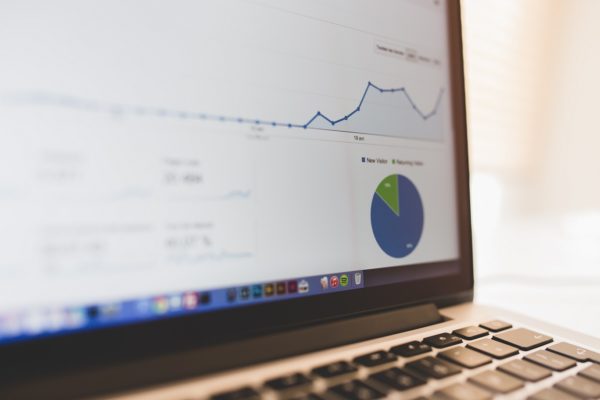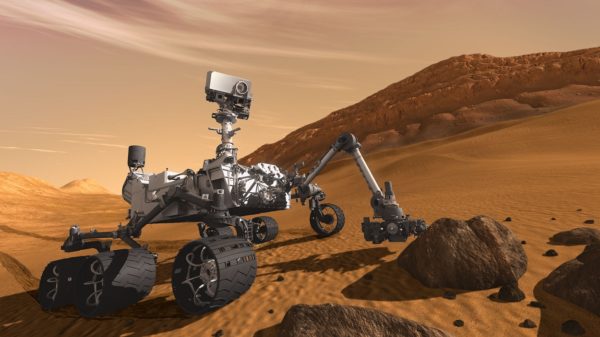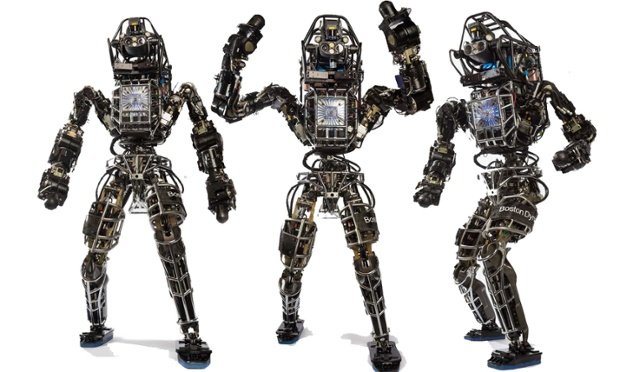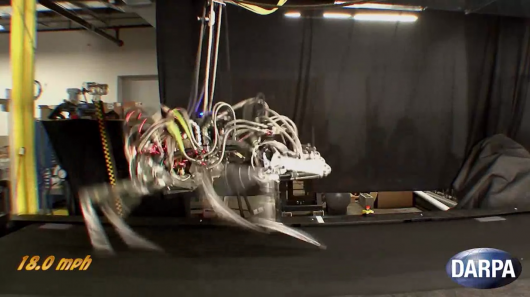Home Tags Posts tagged with "robotics"
robotics
The robots are not coming… they’re already here. Ever since the robot Sophia was granted citizenship status by Saudi Arabia in October, a harsh and unremitting spotlight has hovered over the field of robotics. Some may argue that the granting of citizenship was a publicity stunt by the Saudi government designed to frame the nation as a hub of technology and innovation as the realities of a post-oil economy become more and more pressing. Nonetheless, Sophia represents some interesting musings on the nature of robotics and how our relationship with robots is likely to change by the time we reach the mid 2020s. Many science fiction books, films and video games have pondered the relationship between humanity and machines and how it may lead to our benefit or obliteration. From the bleak tech-noir nihilism of The Terminator to the scathing but ultimately hopeful Wall-E, the ponderings of yesterday’s science fictions seem, according to a recent report, very much the realm of today’s science fact.

Image Credit
Training the workforce of tomorrow today
Human Paragon details in a recent article some consumer robots that will likely have a place in many homes within a decade, but while there’s no doubt that robots will likely help to make our home lives easier, more and more people are becoming wary that robots will one day rob them of their livelihood. Any recent graduate can tell you how competitive the job market is and according to Bill Gates, it’s likely to get a whole lot worse. The billionaire tech giant believes that in order to survive the job market of tomorrow one must specialize in engineering, the sciences or economics to survive.
In order to ensure that humanity retrains its relevancy in an increasingly post-scarcity economy we need to think long and hard about the skills and knowledge with which we imbue tomorrow’s workforce.
Manufacture
We’re already seeing the economic and social effects around the world of towns and cities where manufacture is in decline. Unfortunately, the increasing cost and productivity advantages of automation mean that manufacturing jobs are likely to decline even further. As robotic limbs are able to do increasingly delicate and complex tasks, the human skill factor is becoming less and less of an issue.
The service industry
Self service machines are already taking the place of front of house employees all across the service industry. Walk into a fast food franchise restaurant in a major conurbation and you’ll notice touch screens where once there were beaming employees. As self service technology becomes more sophisticated it could hugely reduce the need for service staff.
Finance
Blue collar jobs aren’t the only ones at risk. As mathematical algorithms become more sophisticated, AI solutions are becoming increasingly common in helping CEOs make financial decisions, manage their cyber security and run their companies.
Technology taketh away, but technology giveth too!
It’s not all doom and gloom! As many jobs as technology makes obsolete, it creates jobs as it develops new industries around it’s technologies. If today’s fast food employee become tomorrow’s app developers we see how improvements in education, technology and training can help to create a better society for all of us.

Image Source
The best way to make money is to meet the demands of the future. Getting behind the latest tech trends could see you on a six figure salary in years to come. But with so many new technologies constantly being developed, which ones are not fads and are likely to really make a difference.
Cloud technology
More and more people are seeing the benefits of freeing up their hard-drives and storing files on the cloud. More cloud servers are having to be built as a result, which is resulting in a demand for more cloud computing specialists both for manufacture, maintenance and marketing. As more and more of are files go cloud-based, it’s thought that hackers are soon going to turn their sights this way. Already these servers are extremely secure, but digital security will constantly need to be improved to stop cybercriminals catching up. Such industries are thought to earn megabucks in the future.

Image Source
Analytics
Data analysts (or data scientists) are already earning huge salaries. Their job is to take huge amounts of data – that previously not computer could deal with – and use them to better the productivity of a business. By analysing huge amounts of web traffic, data scientists can find the places and best places to target when marketing a specific product. Huge masses of financial data can be dissected to find the best way of cutting costs and making profit for a company. As more and more data becomes available, analysts are thought to become even more sought after in all trades.
Virtual and Augmented Reality
Virtual and augmented reality is the stuff of sci-fi movies, now brought to life and readily available in our homes through headsets such as the Oculus Rift. The military, surgeons and pilots are all already using VR as a safe training tool. Estate agents are already using VR to give virtual tours of homes that are for sale. The future of AR and VR is thought to be extremely lucrative and may be something worth considering for those with a creative mind.

Image Source
Robotics
We already have automated hoovers, self-service scanners and, most recently, self-driving cars. Robotics is thought to continue to take off – quite literally in some cases as NASA continues to build new robots to journey into space. AI is thought to permeate huge sections of everyday life by 2025, with many people losing their jobs to robotic processes. Being the creator behind the robots will secure your job for years to come.
The Internet of Things
‘The internet of things’ is the linking of various items and objects through the power of the web. Once upon a time, we could only access the internet through our PCs. Soon phones and TVs started to broaden our connectivity and now kettles, fridges and central heating is all being linked to the internet. More household items are thought to become connected so that we can control them from our phone. On top of this, ‘smart cities’ are thought to emerge. Internet linked traffic lights and train timetables will monitor public transport delays, weather warnings and traffic jams and react accordingly.
Without sounding cliché the future is certainly paved in robots, or at least robotic design. Society has come a long way, and only continues to develop towards a golden pinnacle. Everything we utilize on a regular basis whether inside or outside the home is in some way or another technology or at least influenced by such. Even jobs that would normally be filled by people can be replaced with high end products of technology. Offspring of technology can speak, take orders, and accurately respond with ease now in our society. Science hasn’t stopped its forward push, and it’s quite acute when we take a moment to observe google sudden rise into robotics.
Recent news states google has been laying claim to robotic companies left and right and it has left many wondering the question why. Google’s seemingly recent interest in these types of technologies has been at the top of its list, and as of now they have purchased eight robotics companies spanning over a couple of months. So far Google has procured Schaft Inc, Industrial Perception, Redwood Robotics, Meka Robotics, Holomini, Bot & Dolly, Boston Dynamics, and DeepMind Technologies. When we take a moment to look while these aren’t necessarily a great number of companies they certainly offer quite the variety when it comes to robotics. This list covers smart AI, disaster relief robots, and surprisingly enough even a four-legged robot that can run almost 30 mph. Google has diversified its product offerings over the last decade. If it wasn’t the case before Google will now certainly need the speedy services of A1 Servomotor or at least something comparable to tend to all these robots. It’s all so interesting; however, this doesn’t help clarify our question.

While the answer is not necessarily straightforward we do know that “Google is a business that has made data and algorithms something quite successful, so it’s a logical step for a company that values innovation as highly as Google does”. Anthony Mullen, a senior analyst at Forrester Research, states this to simply be the case, and is the next step in becoming closer to consumers. Mullen goes on to claim that, “Robots, like smartphones, are a platform for products and services. Both require data and intelligence to operate well and Google is very good at data and algorithms. To ensure that they aren’t disintermediated in the ‘last mile’ to the consumer (or employee) means getting involved in the physical world with hardware.”
While this seems like a rather large leap for google it can’t be denied that their healthy interest does seem to at least interconnect with previous ventures. Android phones and the like carry a certain similarity when it comes to functionality so it wouldn’t be odd for a connection to be made and for google to expand. This of course would seem rather complex for the average customer, and is a concept that is gradually worked in. It’s not entirely known if the market is ready for such a thing as robots, however, it is certainly something unexplored worth the endeavor.
An international team of scientists have created a bionic hand which allows the amputee to feel lifelike sensations from their fingers.
Dennis Aabo from Denmark received the hand, which was connected to nerves in his upper arm, following surgery in Italy.
Dennis Aabo, who lost his left hand in a firework accident nearly a decade ago, said the hand was “amazing”.
In laboratory tests he was able to tell the shape and stiffness of objects he picked up, even when blindfolded.
The details were published in the journal Science Translational Medicine.
The team carried out the research project, which included robotics experts from Italy, Switzerland and Germany.
“It is the first time that an amputee has had real-time touch sensation from a prosthetic device” said Prof. Silvestro Micera from the Ecole Polytechnique Federale de Lausanne and Scuola Superiore Sant’Anna, Pisa.
The scientific advance here was not the hand itself, but the electronics and software that enabled it to give sensory feedback to the brain.
Prof. Silvestro Micera and his team added sensors to the artificial hand which could detect and measure information about touch. Using computer algorithms, the scientists transformed the electrical signals they emitted into an impulse that sensory nerves could interpret.

Dennis Aabo, who lost his left hand in a firework accident nearly a decade ago, said the bionic hand was amazing
During an operation in Rome, four electrodes were implanted onto nerves in the patient’s upper arm. These were connected to the artificial sensors in the fingers of the prosthetic hand, so allowing touch and pressure feedback to be sent direct to the brain.
Dennis Aabo, 36, a property developer, spent a month doing laboratory tests, firstly to check the electrodes were functioning, and then with these fully connected to the bionic hand.
He said: “The biggest difference was when I grabbed something I could feel what I was doing without having to look. I could use the hand in the dark.
“It was intuitive to use, and incredible to be able to feel whether objects were soft or hard, square or round.”
The bionic hand is still a prototype, and due to safety restrictions imposed on clinical trials, Dennis Aabo required a second operation to remove the sensors.
Professor Paolo Rossini, neurologist, University Hospital Agostino Gemelli, Rome, said a lot of pre-training was done involving surgery on pigs, and with human cadavers, to ensure they knew exactly how to attach electrodes to the tiny peripheral nerves in the upper arm.
Another member of the team, Dr. Stanisa Raspopovic said: “It was a very exciting moment when after endless hours of testing….Dennis turned to us and said with disbelief, <<This is magic! I can feel the closing of my missing hand!>>”
The international team is now working on how to miniaturize the technology so that it could be used in the home.
“We must get rid of the external cables and make them fully implantable” said Prof. Thomas Stieglitz, University of Frieburg, Germany, whose laboratory created the ultra-thin implantable electrodes.
There is no precise timetable, but scientists think it could be a decade before a sensory feedback bionic hand is commercially available.
And they believe it may pave the way for more realistic prosthetic devices in the future which can detect texture and temperature.
But it will undoubtedly be very expensive, well beyond the means of most patients. And artificial hands still lack the precision and dexterity of the real thing.
The super-functioning bionic hand of science fiction films remains the stuff of fiction.
Nonetheless, Dennis Aabo, who now has his old prosthesis back, is ready to swap it for the bionic hand in any future trial.
[youtube QtPs8d4JbwY 650]
Cheetah, a four-legged and headless robot, has set a new world speed record, according to the US Defense Advanced Research Projects Agency (DARPA).
DARPA said Cheetah achieved 18 mph (29 km/h) on a laboratory treadmill and the previous land speed record by a legged robot was 13.1 mph.
The agency said that the project was part of efforts to develop robots designed to “more effectively assist war fighters across a greater range of missions”.
DARPA – which is run by the Pentagon – funded the Massachusetts robotics company Boston Dynamics to build the machine.
“We plan to get off the treadmill and into the field as soon as possible,” said the firm’s chief robotics scientist, Alfred Rizzi, in a statement.
“We really want to understand what is possible for fast-moving robots.”

Cheetah, a four-legged and headless robot, has set a new world speed record, according to DARPA
The robot’s movements have been modeled on those of fast-running animals in the wild. The machine is designed to flex and un-flex its back to increase the length of its stride.
The current version of Cheetah is dependent on an off-board hydraulic pump, requiring one of the researchers to hold the tubing out of its way. However, the researchers said a free-running prototype was planned for later this year.
The four-year project, which was commissioned in February 2011, ultimately aims to deliver a robot which can “zigzag to chase and evade”, and be able to come to an abrupt halt.
It builds on other models based on animals created by Boston Dynamics including its BigDog rough-terrain robot, designed to recycle energy from one step to the next, and its lizard-like Rise, which can climb walls, trees and fences by using micro-claws on its six feet and a tail for balance.
[youtube d2D71CveQwo]







